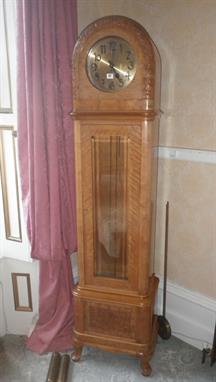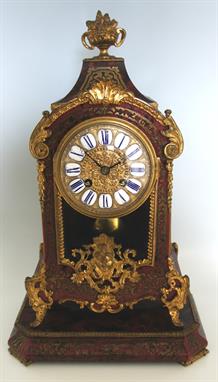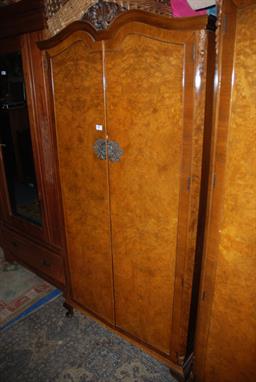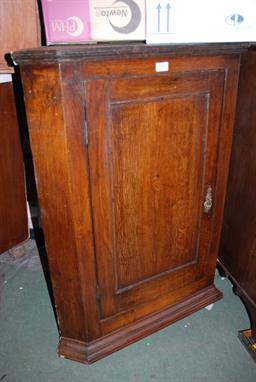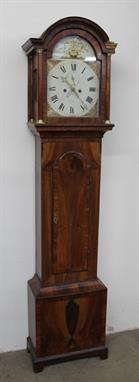We found 254600 price guide item(s) matching your search
There are 254600 lots that match your search criteria. Subscribe now to get instant access to the full price guide service.
Click here to subscribe- List
- Grid
-
254600 item(s)/page
Willy Kessel Ensemble de documentation M. L. Baugniet Ensemble de documentation d’époque contenant 51 photos par Willy Kessel et divers, de mobilier ou d’intérieurs réalisés par M. L. Baugniet dans les années 30 à fin 50. M. L. Baugniet Set van vintage documentatie, samengesteld door 51 foto’s van Willy Kessel en andere, meubels of interieur gemaakt door Marcel Louis Baugniet van de jaren 30 tot eind 1950.
Henri Michaux (1899-1984) Sans titre, 1969 Aquarelle sur papier Cachet de l’atelier au recto Indication manuscrite de l’artiste au dos Cette œuvre est référencée MP587 par Micheline Phankim Aquarel op papier Achteraan gestempeld Handgeschreven indicatie van de kunstenaar Dit werk heeft de referentie MP587 door Micheline Phankim 38 x 27,5 cm Provenance/Herkomst : Collection privée/Prive Collectie
Fragments of German Naval Airship L33. Eight fragments of the German Airship L33 (LZ 76) bought down at Little Wigborough in Essex on 24 September 1916. [1] A rectangular mahogany plaque (16cm x 12cm) on which is mounted a segment of L33 (2 pieces of duralumin riveted at the joint) in the form of St Andrew’s Cross. A small duralumin plaque below the centre reads “Zepp L33 Sep 24 1916”. VGC. [2] A rough-edged duralumin plate (5cm x 4cm) inscribed both sides. On the front is a beautifully executed emblem of the Royal Artillery, as seen on a Cap-badge; on the rear is an inscription “From Zep L33 to Peter Oct 3rd 1916”(sic). The letters “L33” are in a different font to the other engraving. Pierced at left and right edges, the piece is suspended on a loop of thread. [3] A small, neatly finished cross (27mm x 26mm) made of duralumin, in the shape of an “Iron Cross”. Pierced at the top to hang on a necklace or brooch, the cross is engraved “L33 24/9/16”, [4] A tiny segment of duralumin with a oval handwritten label reading “A portion of the framework of a Zeppelin which came down in Essex. 1916. The Crew Surrendered.” (Bocker’s crew was the only crew brought down over Essex which survived to surrender). [5] A partially oxidized fragment of Duralumin, (21cm x 2cm), one end torn, the other showing a rivet hole. 2 labels have been pasted to the upper surface. In neat capitals the two labels read “Zeppelin L33. Kapitan Lieutenant Bocker”(sic) and “Crash landed 24th September 1916. Little Wigborough”. [6] A small duralumin brooch (39mm x 14mm) in the shape of a Zeppelin, engraved in the centre “Zepp L33”. [7] A triangular piece of plywood (9cm x 8cm), marked in pencil on one side “L33 24/9/16”. [8] A small fragment of melted duralumin (4cm x 2cm) attached to a large cardboard label identifying it as a fragment from L33. Note: L33 was on her first mission, when she became one of two airships brought down on 24 September 1916. Commanded by Kapitan Alois Bocker, the target of L33 was London, and after dropping her bombs, she was hit by an Anti-Aircraft shell which caused considerable damage. Turning for home, L33 was attacked by night-fighters over Chelmsford in Essex. Despite throwing her guns and any excess equipment overboard, it became obvious that L33 was losing too much lifting gas, and could not return home. L33 came to earth near Little Wigborough in Essex. Deciding to set fire to the ship, Kapitan Bocker tried to evacuate a nearby cottage, but the inhabitants refused to answer the door. Eventually, Bocker set fire to the ship, formed up his crew and marched away. After meeting a couple of special constables, Kapitan Bocker and his crew were marched to Peldon Post office where the local constable formally arrested them. L33 was one of the R Class Zeppelins, and although her Captain set her alight, a great deal of information was gleaned from the wreckage in terms of construction techniques. Much of the learning was applied to the British R33 Class airship, although not necessarily with full understanding. See Plate 6
Six prints by Jan Balet A collection of 6 prints by the German American artist Jan Balet in the naïve style. All the prints are framed mounted and glazed (49cm x 43 cm) in blued-gilt frames. Scenes include: [1] A young lady (in an unfashionably short skirt) holding her bicycle gazing at a broken-backed Zeppelin, draped over an airship shed. [2.] Count von Zeppelin climbing out of his chauffeur driven car, outside the sheds at Freidrichshafen. Greeting him are 2 obsequeous gentlemen, and a little girl with a large bouquet of flowers. Behind the car, a stray dog is delivering a different greeting. [3] A copy of “Die Zeppeline des Jan Balet” [4] An early zeppelin flying over the floating shed on Lake Constance; in the foreground a uniformed official is standing in the stern of an official rowing boat communicating through a speaking trumpet with the zeppelin. [5] A broad expanse of fence, above which can be seen the top of an airship shed. A well-presented lady in her hat is bending over to peer through the keyhole of a door, marked “Eintritt verboten”. [6] Count von Zeppelin having a conference with several senior and heavily decorated officers, while standing under the stern of an early zeppelin. In the background is an open shed. Standing among the officers is a little boy in a sailor suit. A set of colourful and amusing pictures in the naive fashion Note: Jan Balet was born in 1913, and spent some years of his childhood living with his Grandparents in Freidrichshafen; he emigrated to the USA in 1938, where he became a commercial artist and illustrator. Balet returned to Europe in 1965.GC
3 Heco Tinplate Models items. A World War 2 Nissen Hut. In olive & dark green camouflage on a grass coloured base plate and featuring the following: an aerial and two ventilators to the roof, seven windows, and open door to one end with a notice board and fire exit sign. A porch with entry door at the opposite end. An additional notice board stands outside. Four free-standing oil drums and three ammunition boxes. Plus a ‘Privy’ equipped with internal fittings and an opening door endorsed ’The Ritz’. Together with a Fokker DR1 Tri-plane. Featuring a waving pilot, two forward mounted guns and a single propeller powered by a radial engine. Equipped with a two-wheel undercarriage. Finished in red with ‘Maltese Cross’ markings. Boxed. GC-VGC (paint lifting from three areas of the aircraft).
A small fragment of upholstery fabric, attached to a letter from Maj P R A Forbes, HQ 30th Corps District BAOR, stating that it was taken from Hitler’s chair, a small quantity of associated letters, and a bundle of “On Active Service” letters and covers from Maj Forbes to his wife, mostly dated late 1945, some with “Passed by Censor” stamps, also an embossed brass door plate bearing eagle and swastika in circle. GC (the letters well worn). Accompanying this lot is a sheet of printed biographical details of Maj Forbes and Sir Clive Gerard Liddell to whom Maj Forbes was ADC when he was Governor of Gibraltar, 1940-41.
ANTIQUE 3 WEIGHT REGULATOR WALL CLOCK Antique three weight regulator wall clock having a wooden case and hinged locking glass screen access door. Gild brass and white enameled face with black Roman Numerals. Black hour and minute hands. Circa 19th century. Includes pendulum and weights. Measures 46" height x 17" width x 6 1/2" depth (116.8cm x 43.1cm x 16.5cm).
A Channel Islands mahogany longcase clock by Edmund Richards of Guernsey, working circa 1786-1814, the arched hood with twin turned pillars, enclosing a painted 12in white enamel dial with painted name E.Richards, Guernsey, with moon phase feature, Roman numerals and subsidiary minutes dial, the 30 day movement striking on a gong, the plain trunk with corresponding arched door, set on four short bracket supports, 80in (203cm) high.
A mahogany stick barometer early 19th century, with broken architectural pediment centered with turned brass finial, the rectangular glass door with chequered boxwood and ebony inlay enclosing an engraved silvered plate with the name F.Jarone, mercury Farenheight and Réamur scale thermometer to the left and forecasting scale with sliding vernier to the right, the flamed mahogany trunk with similar boxwood and ebony inlaid decoration to edges and semi inset and exposed glass mercury filled tube, the chamber covered by a turned and domed mahogany cover with central inlaid decoration, 40in (101½cm) high.
French Boulle and gilt brass bracket clock late 19th century, the domed surmount with brass putti musician seated on a cushion. the brass inlaid and red tortoise shell waisted case with cast brass female mask above a circular convex glass hinged door enclosing the engraved 5 inch brass dial with twelve raised white enamels with black painted Roman numerals above a glass panel, the front embellished with scrolling foliage cast brass mounts, the sides of case with two cast brass female masks, the back plate of the striking movement stamped Marti & Cie, Medalle de Bronze, with sun burst pendulum and back plate numbered 183, the hinged back door interior and interior base finely inlaid, set of four cast brass bracket supports, 16.5in (42cm) high, 8.5in (21.5cm) wide.
French Boulle and gilt brass mantel clock on stand French late 19th century in the Louis XV style, the domed surmount with cast gilt brass basket of fruit finial, the case with gilt brass fittings, the convex glass door enclosing a gilt brass 5 inch wide dial with blue on white enamel Roman numerals, above the glass panel with cast female mask decoration, the striking movement stamped to backplate `Japy Freres & Cie` and numbered 1024, inlaid door interior and floor, the sides of case with pierced fretwork panels, set of four cast gilt brass bracket supports, resting on a matching stand with cushion base,14.5in (37cm) high.
A part William and Mary and later walnut veneered kneehole desk, of small proportions circa 1700, the oblong quarter-veneered moulded top with herringbone inlaid border, above a single long frieze drawer with herringbone inlay over a central recessed cupboard with a single hinged door, flanked by two sets of three deep drawers with herringbone inlay and brass swing handles with engraved back plates, raised on four later bracket feet, alterations and additions, 29½in (75cm) wide, 32in (81cm) high, 20½ (52cm) deep.
A Georgian Oak Longcase clock, the plain hood with applied half turned columns, on long arch topped door case, with cross banded door, plain base, brass and white metal face with ormolu mounting, eight day movement with second hand and date roller, by William Yeadon of Stourbridge. 20'' wide x 83'' high x 9 3/4'' deep.
An Art Nouveau satinwood single door Wardrobe having moulded cornice over single central door with rectangular bevel plate mirror, flanked by four raised and moulded panels, the top pair having stylized tulip carving, over lower shoe drawer, iron handles, standing on square feet. 41 1/2'' wide x 76 1/2'' high x 18'' deep
A mid 19th c. flame Mahogany long case Clock having swan pediment hood with rope twist column supports, short door with cross banding flanked by more rope twist columns, lower cross banded panel over cross banded panel base, and having painted face, signature indistinct, Birmingham maker, eight day movement with moon roller and date.
A 1930's Oak breakfront Bureau Bookcase, the moulded edge top over central fall revealing six pigeon holes and small drawer, having applied moulding, over single four panel door, flanked either side by eight pane leaded glazed doors, opening to reveal three shelves, standing on bracket feet. 49'' wide x 46'' high x 15'' deep
A Victorian Oak Davenport, gallery shelf top on fret cut pierced sides, the fall revealing three short drawers and two false drawer fronts, the right hand side having pen drawer over single cupboard door revealing flight of four drawers with recessed wooden knobs, dentil moulding all round and on turned supports and bun feet. 24 1/4'' wide x 40'' high x 24'' deep
A reproduction Queen Anne style Walnut finished double door small Wardrobe having carved shell and leaf crest to the top, pair of opposing shaped top doors with burr Walnut veneer, opening to reveal fitted section with upper shelf, two glazed door cupboards, drawer and two lower compartments along side full length hanging space, standing on cabriole legs. 38'' wide x 75 1/2'' high x 23'' deep
A 19th century Japanese rosewood cabinet with all over carved decoration and various panels inlaid with bone and mother of pearl in the Shibyama taste CONDITION REPORTS Dimensions : 144 cm wide x 213.5 cm high Viewing in person is recommended for this lot as it is in poor condition and is in need of quite a lot of restoration in order to bring it back to its former glory. Knocks, bumps, scratches, chips, losses, etc. One of the panels to top is missing, and another panel door is missing lower left. There is an additional panel (please see photos) and various pieces of loose wood which appear to belong to the cabinet, together with some loose pieces of decoration. All panels have damaged and are missing a large amount of their decoration, including cracks. Probably only about 40 - 50% of decoration is present. Discolouration from top to bottom and deep scratches.
A mahogany partners desk in the George III taste CONDITION REPORTS Size approx 182cm wide x 106cm. Wear and scuffs and some knocks and chips to edges. The cupboard door (as dummy drawers) requires some attention / repair and is not currently fitted properly. Various scratches and losses to finish to edges, particularly to kneehole sections. Various scuffs and marks to leather insert top.
Leica M2 Bodies: M2, chrome, serial no. 1029429, F-G, shutter working, curtain sticking on slow speeds, M2, chrome, serial no. 1144583, P, shutter jammed, heavy wear (2) No. 1029429, paint loss to film door, light mottled marks to top, No. 1144583, dents to top, crack to vulcanite on film door
A Maple & Co mahogany display cabinet, the raised superstructure with a pair of mirrors flanking a cupboard profusely carved with pomegranates, flowers and leaves, above a pair of glazed doors and side, with a central cupboard door similarly carved, the base with a pot board, square tapering legs and tapering feet, 152 cm wide by 192 cm high by 45 cm deep
A 19th century walnut longcase clock, the domed hood with ionic columns and a long trunk door with an arched top, box base and bracket feet, the 30cm dial painted with an urn and flowers to the arch and floral spandrels, with Roman numerals, a seconds subsidiary dial and calendar aperture marked " E Cohen, Redruth", the eight day movement striking on a bell", 204cm high
-
254600 item(s)/page



